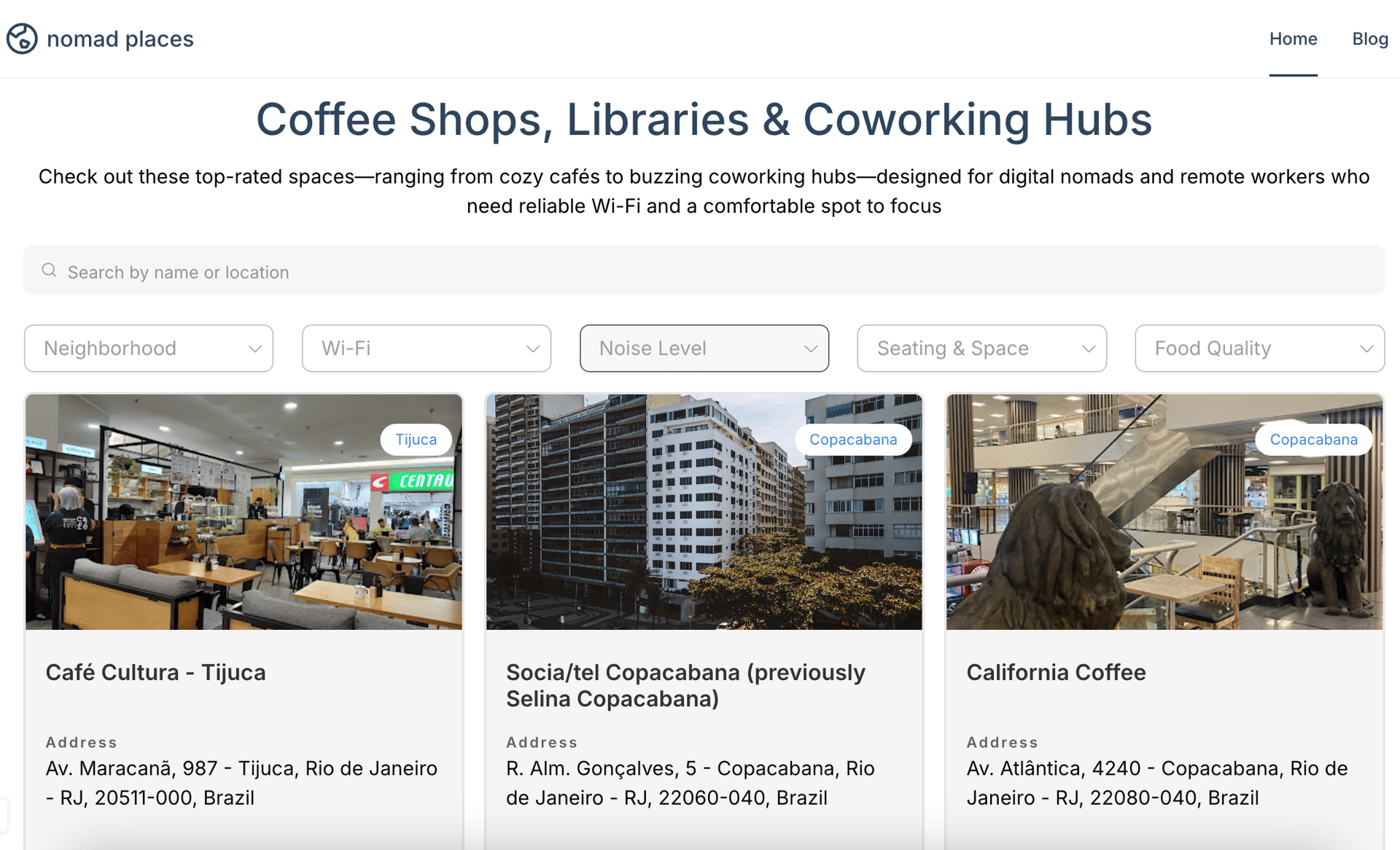
Mesita
AI-powered concierge service for restaurant reservations
Context & Problem Space
While traveling and exploring concierge services, I noticed a recurring frustration: generalist concierges (Amex, Chase, hotel desks) often disappointed when it came to the one task that matters most abroad: booking great restaurants. The suggestions felt like “Google-able lists,” and even harder, the actual reservations were left to me. From a product perspective, this was a clear opportunity: a highly specific, high-frequency pain point (finding and securing the right table) underserved by broad concierge services.


Discovery & Hypothesis
As in any product discovery, I started lean. I framed my hypothesis: If travellers value curated restaurant reservations and are willing to pay for someone else to handle the friction, then a specialised concierge service could succeed
To test this, I ran small validation experiments:
Posted on Reddit to gauge whether people would pay for this service.
Received positive signals, travelers highlighted pain with language barriers, limited online booking systems, and wasted time on research.
Converted interest into an actual first paying client before building any product.
This sequence: discovery, assumption testing, and early monetisation, gave me confidence to proceed.
Constraints & Prioritization
As a solo builder, I prioritized like a PM
Validate before building → don’t write code until someone pays.
Narrow scope → focus only on restaurants, not “everything concierge.”
Build for speed → use no-code, AI, and automation to reach live MVP quickly.
These trade-offs mirror real-world product management: reducing scope to validate the riskiest assumptions fast.
From Validation to Build
After securing my first client, I shifted from discovery to delivery:
Started with Lovable.dev to bootstrap a prototype, but quickly hit limitations.
Switched to VS Code with Claude Code, leveraging AI pair programming for faster iteration.
Used Vercel for hosting, Supabase for database needs, and Stripe for payments.
Automated concierge workflows with Make + Airtable (request intake, tracking, notifications).
This stack balanced speed (no-code/AI), robustness (Supabase + Stripe), and automation (Make).
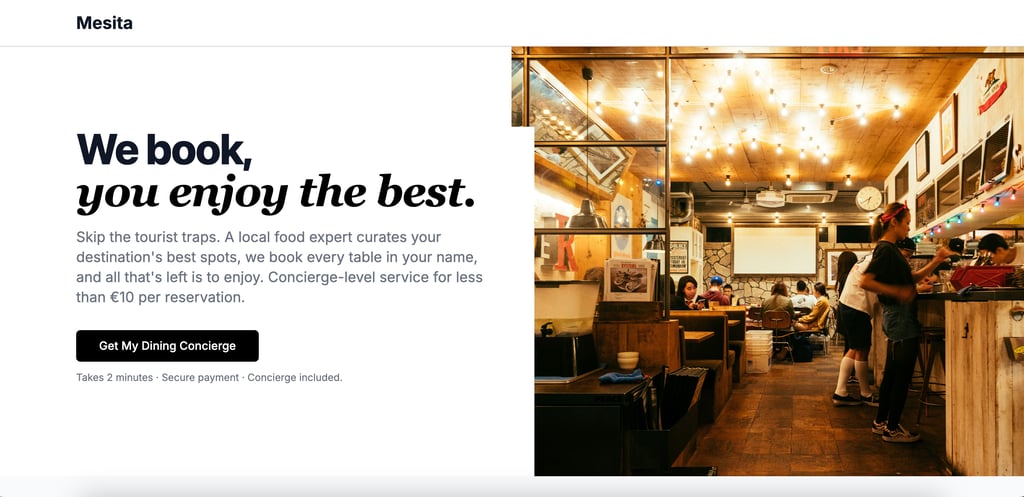

Iterations and Learnings
The first version shipped quickly, but iteration came from real clients:
Some users valued convenience (time saved, handled calls in Spanish)
Other users valued the surprise factors (curated lists).
Limiting the scope to restaurants clarified the value proposition: depth over breadth.
Mesita.club delivered peace of mind as the core JTBD.
Outcome and Impact
From a product lens, Mesita.club achieved:
Validation before code → early paying client confirmed demand.
Time-to-market → MVP shipped rapidly using AI + no-code.
Clear positioning → unlike generalist concierges, Mesita delivers one job extremely well.
Scalability → Tech architecture (Supabase + Make automations) supports growth to more cities.
Reflections and Product Learnings
Mesita.club reinforced key product management principles:
Start with problem discovery, not solutioning — the idea came from repeated signals in real communities.
Validate with real willingness to pay before investing in a full build.
Use AI as leverage — Claude Code accelerated engineering and freed me to focus on product decisions.
Scope ruthlessly — by cutting down to just restaurants, I created clarity of purpose and differentiated value.
Iterate on real feedback — client use shaped positioning and helped refine workflows.
Closing
Mesita.club remains a live experiment, but it’s also a proof point: with a strong product mindset, AI leverage, and lean processes, a solo PM can take an idea from assumption to paying client to functional product in weeks.

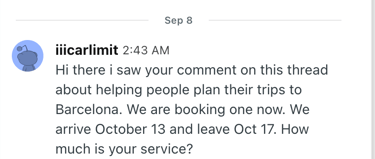

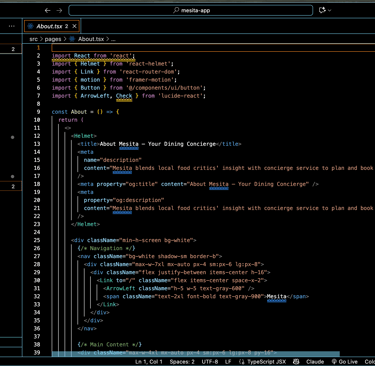
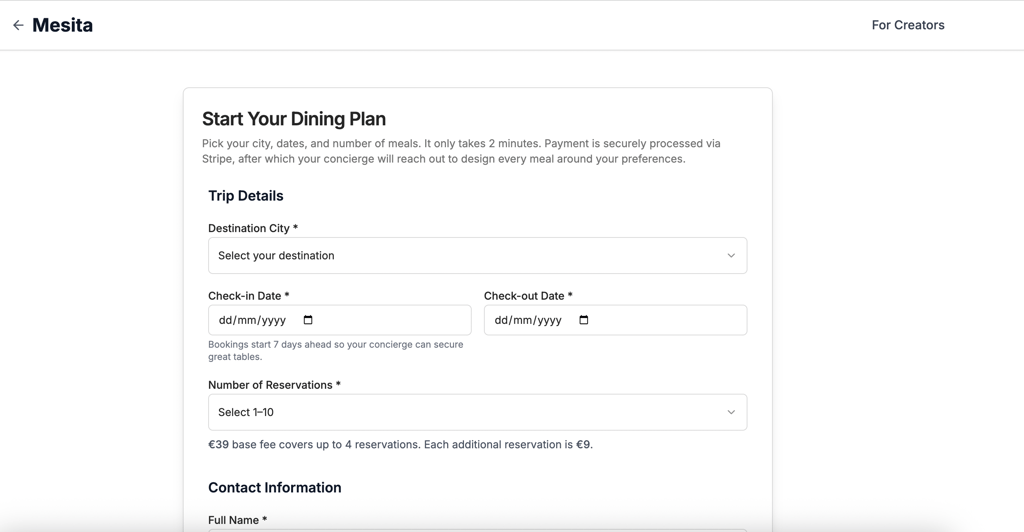

Connect
Links
© 2025. All rights reserved.